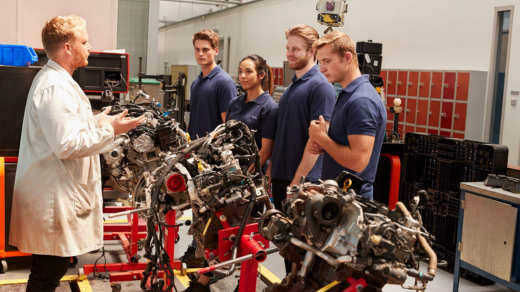Honda’s VTEC Revolution: How Japanese Engineering Changed Performance Engines Forever

When automotive historians chronicle the most significant engineering innovations of the late 20th century, Honda’s Variable Valve Timing and Lift Electronic Control (VTEC) system undoubtedly deserves a prominent chapter. This revolutionary technology fundamentally changed how performance engines operate, enabling compact, fuel-efficient motors to deliver exceptional power when demanded while maintaining practical everyday drivability.
The Engineering Challenge: Breaking the Compromise
Prior to VTEC’s introduction, engine designers faced an inherent compromise: valvetrain configurations optimized for high-RPM power typically sacrificed low-end torque and fuel efficiency. Conversely, engines tuned for everyday driving lacked exciting performance characteristics. This compromise seemed unavoidable due to the fixed nature of traditional camshaft designs.
Honda’s engineers approached this problem with characteristic Japanese innovation, developing a system that could effectively provide two engines in one – an efficient, smooth-running motor for daily driving that could transform into a high-performance powerplant when pushed to higher RPMs.
VTEC Mechanics: Elegant Engineering Solutions
At its core, VTEC employs multiple cam profiles on the same camshaft – typically a mild profile for low-RPM operation and an aggressive profile for high-RPM performance. The genius lies in the switching mechanism: hydraulically activated pins that lock the valvetrain components together at a predetermined RPM threshold, seamlessly transitioning between profiles.
This mechanical elegance allows VTEC engines to operate with conservative valve timing and lift during normal driving conditions, promoting fuel efficiency and emissions performance. When the driver demands more power and the engine reaches the activation threshold (typically between 4,500-6,000 RPM depending on the specific engine), the system switches to the performance-oriented cam profile, dramatically increasing valve lift and duration.
The result is an engine that breathes substantially better at high RPMs, delivering a noticeable surge in power that Honda enthusiasts affectionately term “hitting VTEC.”
B-Series: The VTEC Pioneers
The B-Series engines, particularly the B16A and B18C variants, introduced many American drivers to VTEC technology. Found in vehicles like the Acura Integra GS-R and Type R models, these engines demonstrated remarkable specific output for naturally aspirated designs.
The B16A, with its 1.6-liter displacement, produced an impressive 160 horsepower – achieving the magical 100 horsepower-per-liter threshold that few production naturally aspirated engines had reached. The high-revving nature of these engines (with redlines typically between 8,000-8,400 RPM) provided a driving experience reminiscent of motorcycle engines, with linear power delivery culminating in an exhilarating rush of power at high RPMs.
JDM Honda engines for sale from this era remain highly sought after for their reliability and performance potential, with many enthusiasts seeking them for engine swaps into various Honda chassis.
K-Series: VTEC Evolution
As emissions regulations tightened and consumer expectations for both performance and efficiency increased, Honda evolved its VTEC technology with the K-Series engines. These more sophisticated powerplants introduced i-VTEC (intelligent VTEC), which added variable camshaft phasing to the original VTEC concept.
This advancement allowed for even greater control over the combustion process, with the ability to adjust valve timing continuously across the RPM range in addition to the traditional VTEC cam profile switching. K-Series engines like the K20A and K24A found in vehicles such as the Civic Si, RSX Type-S, and Accord delivered impressive performance while meeting stringent emissions standards.
The K-Series also introduced innovations in block design, with a rigid casting featuring integrated oil passages and improved cooling channels. The cylinder head design evolved with more efficient combustion chambers and revised port geometry, building upon lessons learned from the B-Series era.
F-Series and Beyond: VTEC in Modern Applications
Honda’s commitment to VTEC technology continued with the F-Series engines found in vehicles like the S2000 roadster. The F20C engine, with its 2.0-liter displacement producing 240 horsepower in U.S. specification, achieved an extraordinary 120 horsepower per liter – setting production car records at its introduction and demonstrating the continued viability of naturally aspirated performance.
In more recent years, Honda has incorporated VTEC principles into its Earth Dreams technology, combining variable valve timing and lift with direct injection, reduced friction components, and in some applications, turbocharging. These modern interpretations maintain the spirit of the original VTEC concept while adapting to contemporary demands for reduced emissions and improved fuel economy.
Cultural Impact: VTEC in Enthusiast Communities
Beyond its technical merits, VTEC technology became a cultural touchstone among automotive enthusiasts. The distinctive character of these engines – particularly the pronounced power surge when VTEC engages – created a dedicated following that continues to celebrate these powerplants decades after their introduction.
The phrase “VTEC just kicked in, yo!” became a popular internet meme, symbolizing the sudden surge of power that characterized these engines. While often used humorously, this phrase acknowledges the distinctive driving experience that made VTEC engines special.
Honda’s racing success with VTEC technology, from touring car championships to Formula 1 (where Honda provided engines implementing similar variable valve timing principles), further cemented its reputation among performance enthusiasts.
Engineering Legacy and Influence
VTEC’s influence extended far beyond Honda’s product line. The technology prompted competitive responses from virtually every major manufacturer, with variable valve timing and lift systems becoming standard features in performance engines across the industry.
Toyota’s VVT-i, BMW’s VANOS, and numerous other systems trace their conceptual lineage to Honda’s pioneering work, even as they implemented different mechanical solutions to achieve similar goals. This technological arms race has benefited consumers with engines that increasingly refuse to compromise between performance, efficiency, and emissions.
Conclusion
Honda’s VTEC technology represents one of the most significant contributions to internal combustion engine development in the modern era. By solving the fundamental compromise between low-end drivability and high-end performance, Honda engineers created powerplants that changed expectations for what small-displacement engines could achieve.
The legacy of these engines continues in both the enthusiast community, where early VTEC motors remain prized for their unique character and tuning potential, and in the broader automotive industry, where variable valve timing technologies have become ubiquitous. For those who have experienced the distinctive surge of a VTEC engine reaching its activation point, the technology represents not just clever engineering but a defining characteristic of Honda’s performance philosophy.




